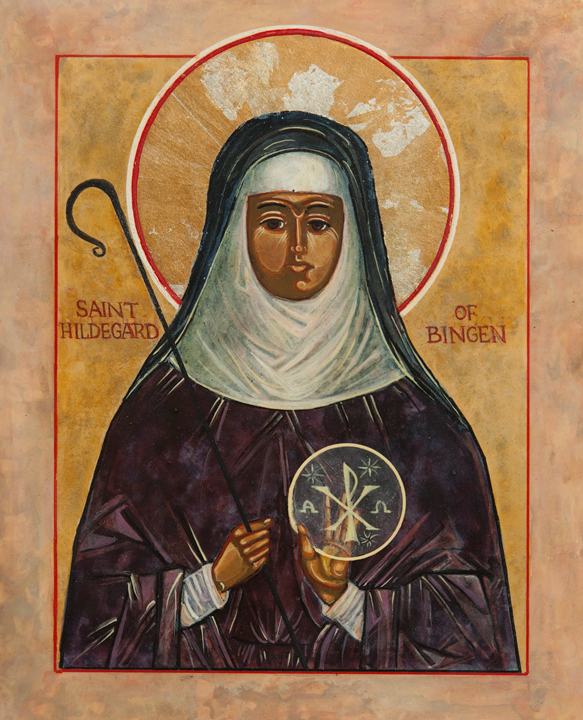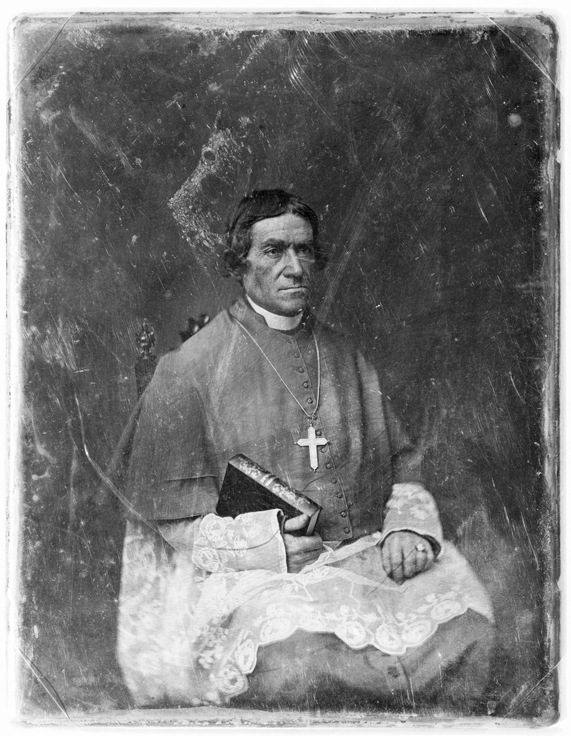by Cindy Wooden

VATICAN CITY (CNS) – Although she was never canonized, St. Hildegard of Bingen is to be added to the Catholic Church’s formal list of saints, and Catholics worldwide may celebrate her feast day with a Mass and special readings by order of Pope Benedict XVI.
The Vatican announced May 10 that the pope formalized the church’s recognition of the 12th-century German Benedictine mystic, “inscribing her in the catalogue of saints.” The same day, the pope advanced the sainthood causes of 19th-century U.S. Bishop Frederic Baraga of Marquette, Mich., and of Sister Miriam Teresa Demjanovich, a member of the Sisters of Charity of St. Elizabeth in Convent Station, N.J., who died in 1927.
The pope’s order regarding St. Hildegard recognizes her widespread fame of holiness and that Catholics have venerated her for centuries.
In a 2010 series of audience talks about women’s contributions to the church, Pope Benedict dedicated two talks to St. Hildegard. He said she is a worthy role model for Catholics today because of “her love for Christ and his church, which was suffering in her time, too, and was wounded also then by the sins of priests and laypeople.”
In St. Hildegard’s time, there were calls for radical reform of the church to fight the problem of abuses made by the clergy, the pope had said. However, she “reproached demands to subvert the very nature of the church” and reminded people that “a true renewal of the ecclesial community is not achieved so much with a change in the structures as much as with a sincere spirit of penitence.”
In addition, the pope noted, modern Catholics can learn from her “love for creation, her medicine, her poetry and music that is being recreated today.”
During a May 10 meeting with Cardinal Angelo Amato, prefect of the Congregation for Saints’ Causes, Pope Benedict signed 17 decrees furthering the sainthood causes of dozens of individuals, including Bishop Baraga and Sister Demjanovich.
The decrees for both of the U.S. candidates for canonization recognize that they heroically lived the Christian virtues and are “venerable.” Before they can be beatified, the Vatican must recognize that a miracle has occurred through their intercession.
Father Baraga was ordained a priest in Slovenia in 1823 but left for America in the early 1830s to serve among the Ojibwa and Ottawa in Michigan. Beginning in 1835 he worked in the Upper Peninsula, where his constant travels to Indian villages even in the harsh winter months earned him the nickname “Snowshoe Priest.”
He was named the first bishop of Upper Michigan in 1857. In 1866, two years before his death, he moved the headquarters of the diocese from Sault Ste. Marie on the eastern end of the peninsula to centrally located Marquette, where it remains today.
Sister Demjanovich was born in Bayonne, N.J., in 1901. After attending Bayonne public schools, she began studies at the College of St. Elizabeth in Convent Station, graduating in 1923. Two years later, she entered the Sisters of Charity at Convent Station. She wrote a series of spiritual conferences, which were collected and published after her death as a book, “Greater Perfection.” She died in 1927 at the age of 26.
Announcing the decrees signed by the pope May 10, the Vatican also formally acknowledged that Pope Benedict signed a decree March 14 recognizing the heroic virtues of Father Felix Varela, a Cuban born priest who died in Florida in 1853. The move was announced in the United States and Cuba in April.
Among the decrees there also were two recognizing miracles, paving the way for the beatifications of Capuchin Brother Thomas of Olera, Italy, who died in Austria in 1631, and of Italian Salesian Sister Maria Troncatti, a missionary who died in a plane crash in Ecuador in 1969 at the age of 86. She had served in South America for almost 50 years.
Other decrees recognized the martyrdom of: Odoardo Focherini, an Italian who died in a Nazi prison camp in 1944 after being arrested while helping Jews escape capture by the Nazis; 14 Franciscan friars killed in Prague in 1611; and 22 Spaniards killed during the Spanish civil war in the 1930s.

